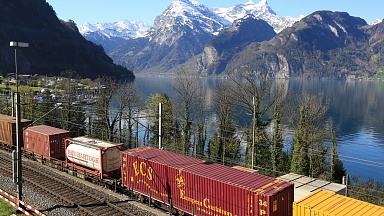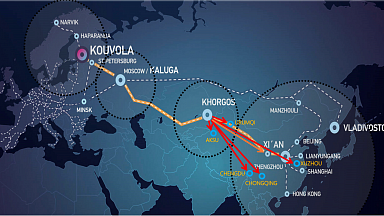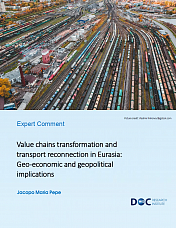Among the flagship initiatives in the New Silk Road is the urge to interfere in the infrastructure of transit countries with the purpose to upgrade it or construct it anew. Such interventions can prove very beneficial for relatively underdeveloped countries, often scarred by chronic sociopolitical and economic unrest.
In this sense, shared knowledge and technological or legislative tools by advanced countries can help BRI members improve their supply chains’ overall presence. However, this could also indicate a centralisation of power that could prove catastrophic in terms of sustainability and society. How could the New Silk Road, thus, change to become more socially and environmentally friendly?
No more long-haulage?
Sustainability and reduced CO2 emissions constitute some of the main characteristics of rail freight transport. Simultaneously, they are its most potent arguments when the discussion focuses on the modal shift and the increase of rail’s share in the market. However, how much sustainable can a mode of transport become when it traverses several countries, counting thousands of kilometres?
According to Watson, it cannot be sustainable. Or, at least, it cannot be as sustainable as it claims to be. Reducing transit distances is among the prerequisites that can render the New Silk Road viable in the future. Nevertheless, Covid-19 pandemic is not the optimal environment to prove this argument. In a disturbed market, due to all the restrictions, transporting goods to Europe from countries afar, like China, for instance, is vital to keep supply chains running in these circumstances. But what will happen after the pandemic ends? And how can logistics implement shorter-distance rail haulage? The answer lies in the production of goods itself.
Relocation of production
In her study findings, Watson claims that goods’ transportation is not the only burning issue currently. Instead, the production of goods in very distant locations is the core of the problem for an enterprise like the New Silk Road. «It encourages disproportionate increases in the use of natural resources, and as a result, it increases pollution and CO2 emissions», said Watson.
In a few words, to achieve sustainability in transportation, firstly, we must achieve sustainability in production. Focusing on a circular economy approach is then the only viable option. Production should stop concentrating in a specific region but spread more evenly and come closer to the consumers. In this way, long transportation needs will also start diminishing since the production sites will be closer to the distribution destinations.
Europe needs extra caution
Especially for Europe, such a shift in production and transportation will have a significant impact. It will not be necessarily negative; however, Europe will have to change its entire approach. «The governments and manufacturers in Europe will need to work together to develop a robust business model to relocate production closer to consumers and to be able to compete against global corporations at the same time keeping non-competitive relationships inside Europe», commented Watson.
«Furthermore, it will need to create a favourable business climate for those manufacturers willing to move their activities to the EU. This will reduce the environmental impact from the transportation of goods and reduce the economic and political dependency of Europe on specific geographical areas of production», she added. Understandably, the New Silk Road will be subject to many developments, and suggestions say that it must pay more attention to socioeconomic development and the environment.
Consequently, it seems that progress in this direction is inevitable if the project wants to remain intact over time. It needs to get rid of its politically driven character and power games and focus more on the benefits it will bring to society in the long-term, claimed Watson. Will this be the case, though? Time will undoubtedly show.




